What is a Tactical Backpack?
During the Korean War, Army pilots and infantry needed a way to abandon their position quickly without giving up the advantage. Known as “bugging out,” this quick getaway was successful in large part because these troops carried everything they needed to survive with them.
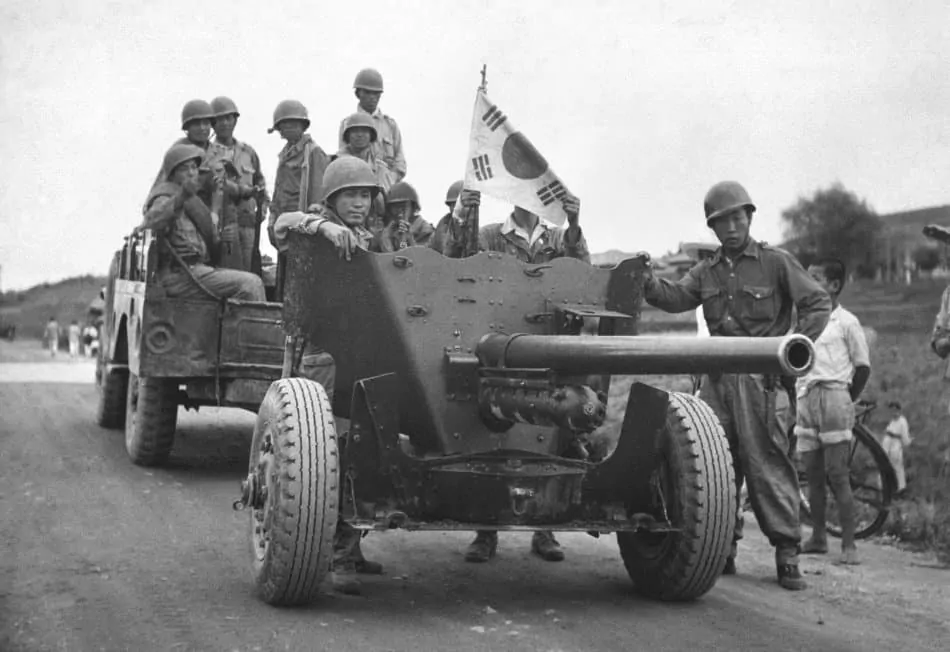
Their tactical backpacks, made with rugged materials and plenty of compartments, provided food, shelter and defense, even when they were on the move through unfamiliar or hostile territory.
Things to Consider Before Making a Purchase
If you’re thinking about putting together a 72 hour bug-out bag, you probably already have a few scenarios in mind that would set the theme of the emergency you want to prepare for, such as a natural disaster, a nuclear war, a breakdown of civil society or an outbreak of disease.
Perhaps you live in an earthquake-prone area or are in close proximity to a chemical plant. You might worry about yearly flooding or need to prepare to survive the aftermath of a devastating tornado. Or maybe you just like the look of a tactical backpack and want one for your urban pursuits.
Another thing to consider is your bug out destination. Are you a city dweller or do you live out in the country? Your bag’s appearance and contents will probably be vastly different depending on where you’re planning on seeking safety.
City dwellers will want an inconspicuous bag that doesn’t draw attention to its tactical nature, while those planning on hiking through the back country may want a camouflage pattern and don’t care that their bag has a military design.
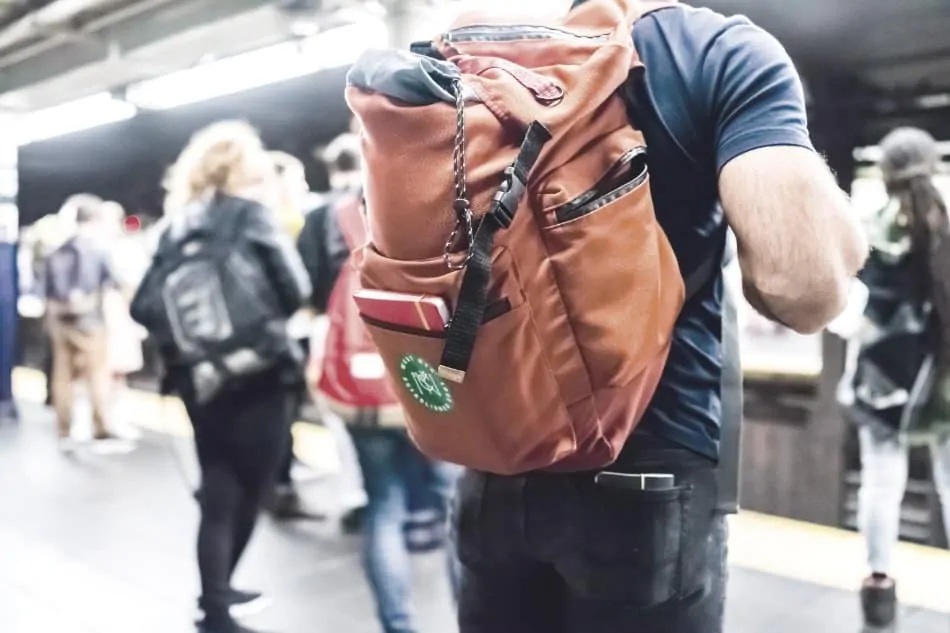
Whatever your personal circumstances, you’ll need to take all possible threats into account when coming up with your survival plan, so you’ll know exactly the kind of tactical backpack that’ll best fit your requirements and have the size necessary to hold the items you’ll need to carry in it.
Rather than preparing for a calamity, you may be in a line of work or have a hobby that requires you to carry gear with you as you go about your day and prefer a rugged design.
What Will It Be Used For?
Bug Out 72-Hour Emergency Pack
The baseline standard is the 72-hour kit. This amount of time provides necessary survival while waiting for emergency services to arrive and give aid.
Assuming there is a functioning system of disaster relief, three days will allow plenty of time for rescue if you are sheltering in place of support while you are traveling to a safer area.
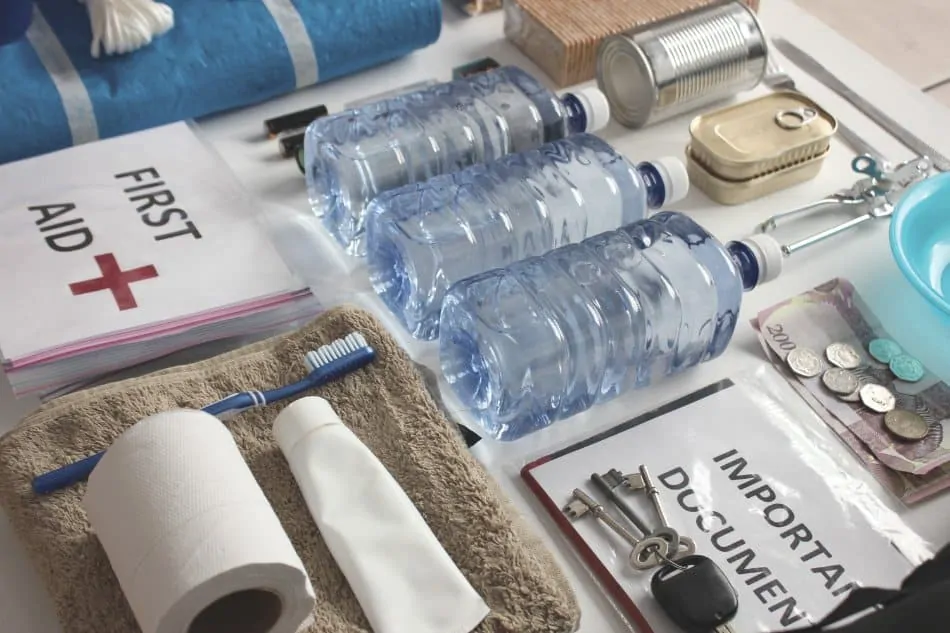
Your 72-hour pack isn’t necessarily meant to support you living off the land for an extended period of time. Realistically, it will hold emergency supplies you may need, but most people forced out of their homes during a natural disaster end up in shelters set up by the Red Cross, FEMA or other emergency personnel.
Everyday Carry (EDC)
An everyday carry is usually a much smaller version of a full bug-out bag and usually contains career items in addition to some survival elements.
Typically an everyday carry would include a laptop or tablet device, a pocket knife, Leatherman tool, smartphone, an energy bar, earphones, a bottle of water and items specific to your particular line of work, like a calculator, flashlight or notebook.
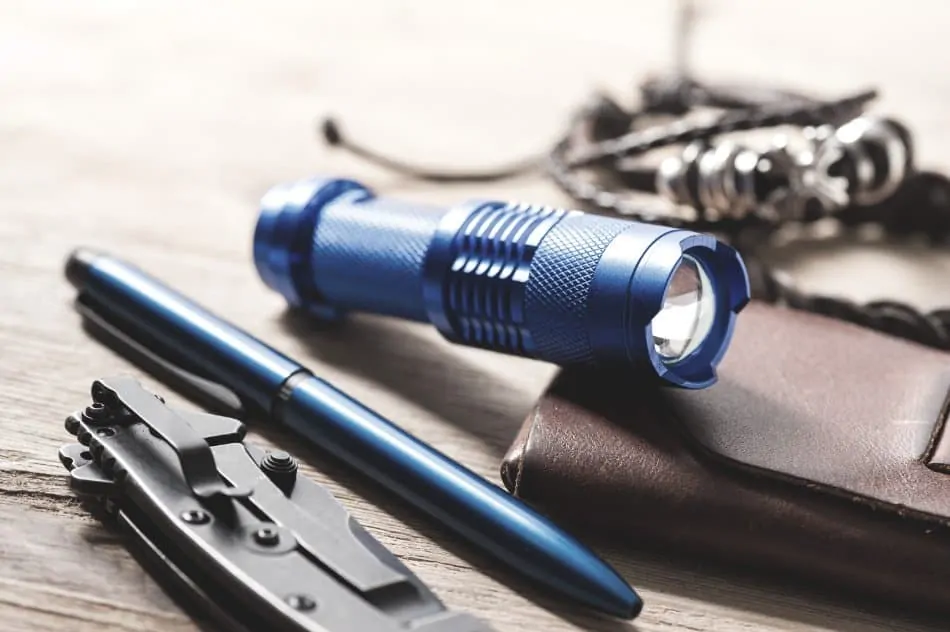
Tactical backpacks for everyday carry are smaller and more streamlined or may even diverge in design entirely from a classically styled bag. A variation of an everyday carry bag is a “get home bag.” This will be more substantial than your everyday carry, as you’ll need to prepare for possibly being on foot and therefore several hours from home if you are forced to walk.
Most get home bags will be the size of an ordinary backpack but have tactical qualities and plenty of compartments to hold the items you’ll need to keep you going for up to 24 hours. Don’t forget your first aid kit!
Baby Gear
A successful outing with children can sometimes feel like planning the D-Day invasion, so carrying a tactical backpack filled with necessary baby items like diapers, wipes, a spare bottle, toys and an extra outfit can be essential.
These can also double as bug out or get home bags in the event of an emergency as they are already carrying all the things necessary to take care of your baby. Tactical backpacks, with their rugged design and number of compartments, make an excellent baby support bag even if your destination is the shopping mall.
Once you’ve decided exactly what kind of event you’re planning for, you’ll want to think about the amount of things you’ll carry and how you’re going to support that weight. A baby bag or everyday carry will be light enough to choose just about any style of bag or backpack you like, but a 24-hour or 72-hour bug out bag will require food, liquids, clothing, gear, bedding and shelter.
Most bug out bags aim to weigh in at 10% of your body weight when fully packed. You won’t want to carry more than 20% of your body weight for long distances, so you’ll want to aim between 10% and 20%, according to what you can comfortably carry given your level of physical fitness.
If you’re planning on carrying several days’ worth of survival gear including a survival shovel, you may want to invest in a weight-saving pack and purchase the kind of gear used by ultralight backpackers.
What Volume Do You Require?
Backpacks are measured in liters; unless you are planning on carrying an expedition-style pack, you can expect your bag to measure in at less than 100 liters.
Some designs will make such efficient use of space that you can conceivably get away with a smaller pack, but your best strategy is to take stock of how much you need to carry or the purpose of your bag and work with that information when choosing a size.
Sizes may vary between manufacturers, with some measuring volume according to the sum total of all compartments that can be zippered or toggled shut, while others will include the measurement of open mesh pockets, such as those meant to carry water bottles, in the total volume.
Everyday Carry
Daypacks typically measure anywhere from 20 to 35 liters. Your daypack will probably have a place to add a hydration bladder or other features.
You may prefer your everyday carry in an alternative lumbar pack or messenger bag style; these will have a carrying capacity of anywhere from one liter to ten liters.
72-Hour Pack
For multi-day use, a pack that measures 45 to 60 liters will accommodate the things required for short periods of self-sufficiency, such as a small tent, sleeping bag, food, cookware, extra clothing and a tarp.
You’ll want to balance how much you need to bring with how much you can carry. Just because you can hold extra items in your 70-liter bag does not mean it’s a good choice if you can only carry it for short distances.
Baby Gear
Your baby gear is bulky but not necessarily heavy. Disposable diapers can take up quite a bit of space but don’t weigh a great amount, so if you’re intent on carrying quite a few, you can choose a larger bag without the commensurate weight.
Diapers are also easily compressed, meaning you may be able to fit quite a few into a smaller bag if you’re just prepping for a day-long outing.
Appearance
Beyond personal preference, there are some things to consider when choosing the appearance of your bag. If you’re mainly using it in the woods and want to blend in with your surroundings, a military-style camouflage pattern is a great choice.

If you plan to use the best tactical backpack for multi-day hiking trips, you might prefer a highly visible color so other members of your group can see you on the trail or in case you become lost.
This same style may call unwanted attention to you when carrying it in a city, so you might want to choose a different style that blends in with the surrounding backpack styles there. The term for blending in is “gray man,” essentially fading into the background and not calling undue attention to yourself.
A military backpack might indicate to others that you have weapons or ammunition, even if you aren’t carrying them. If you’re in an emergency situation, you don’t need that kind of attention from strangers.
Getting the Size Right: Adjustability
You’ll want to take measurements of your chest and waist. Backpacks come in sizes from small to large and can also be gender-specific.
These sizes ensure that the weight of your pack will fall on the most load-bearing areas for a comfortable fit. Buckles at different points of your pack, such as in the shoulders and waist, will help you to personalize the size to fit your dimensions even more accurately.
Torso
With the help of another person, measure from the top of your spine where it makes a bony protrusion between your shoulders when you let your head hang down. With that as the starting point, place your hands on your hips with your thumbs pointing toward your spine.
The measurement of the second point should fall between your thumbs. It’s this measurement that will give you your torso length.
As a general rule of thumb, a small pack will fit a torso of 16″- 17″, a medium pack will fit an 18″- 19″ torso and a 20″ or more torso will require a large pack. Manufacturers will all have small variations in their sizing, so you may find you’ll need to go up or down a size depending on the bag.
You’ll be able to adjust the shoulder and sternum straps to evenly distribute the weight you’ll carry through your chest. You’ll want the sternum strap to sit just below the bones of your collarbone.
Hips
Measure around the top of your hips to get the proper circumference for your waist strap. If you find that a backpack fitting your torso length doesn’t exactly match your hip measurements, you can adjust the buckles on your waist strap to get a better fit.
Comfort Factor
Most packs will offer extra padding in areas touching your body, such as the shoulder straps, waist belt and the area touching your back. Most manufacturers will use a combination of dense plastic foams to pad their packs. Once adjusted properly, your shoulder straps and waist belt should rest firmly but comfortably, without chafing.
The system of straps and buckles on the best tactical backpack might seem inscrutable at first, but they are there to make minute adjustments to fit your measurements as if the pack were tailored to your measurements.
You’ll want to tighten your hip belt first, positioning it snugly but comfortably on the top of your hip bones. It should fit comfortably, as ideally up to 80% of the weight of your pack will be supported on your hips.

Your shoulder straps are the second set of buckles to adjust. They should sit firmly across your torso, but still allow for a width of two fingers between the straps and your chest. Your sternum strap is the next belt to adjust; keep it snug but not so tight that it keeps your arms from moving comfortably.
Your shoulder straps may have a small set of buckles at the top. These control the straps known as load lifters and should be tightened after you have comfortably fitted your shoulder straps in place.
These load lifters will bring your pack closer to your body, which can be especially helpful when you are traveling over uneven ground.
Your hip belt may have a small set of straps toward the rear. These are stabilizers that match the load lifters at the top of your pack, keeping the bottom of your bag snugly against your body. You can adjust these as you like, ensuring a comfortable fit.
The system of straps that criss-crosses your bag are compression straps, meant to press your total load into a smaller package. You can adjust these as needed; the smaller your pack and the closer you hold it to your body, the more it moves with you as a single unit, rather than swaying as you walk.
For short distances, it may not matter so much, but over time, a bag that flops around on the trail can be the ultimate cause of injury and discomfort.
Durability
Tactical backpack manufacturers are constantly innovating their designs and improving materials, taking inspiration from military designs and seeking to correct problems encountered by scientific expeditions. Just take a look at the best edc backpacks around these days and you’ll notice how durably they are becoming.
As a result, today’s bags are better than ever, incorporating lightweight, tough materials into bag designs that ensure both comfort and convenience.
There are plenty of polymer fabrics available for making lightweight, water-resistant backpack material, but one of the better options is ripstop nylon, developed in answer to regular nylon’s tendency to rip in certain directions.
Nylon was a favorite in the Sixties for a range of items, and it has never really gone out of style in backpack manufacture, as its durability is an improvement over the cotton and polyester backpack materials.
Most nylons used in backpack manufacturing will have qualifying letters or numbers after them, informing you of how durable the fabric is. For example, a nylon with the number 500D after it indicates a high thickness level.
The “D” stands for “Denier,” but you can think of it as standing for density. Quality backpacks will have a rating in the 450D or higher range. Some of the best nylon brands on the market today are Kodra and Cordura.

You will also want to look at things like thread count and stitches per inch. While a general rule of thumb is the higher the number, the better the quality, there does come a time when a high number might actively be worse.
For example, a stitch-per-inch count higher than 10 might result in the seams ripping your nylon fabric. While a thread count rating for backpacks isn’t common, it is one way to gauge the strength of the fabric, and in this case, the higher the number, the better.
Waterproofing is another rating you’ll find on prospective bags. There are design tricks to keep water from seeping into your pack, such as crafting a fold of cloth to lay over a zipper or using an extra-dense fabric weave. There are also coatings manufacturers may apply to the outside of the bag to further protect the fabric. A rating like DWR stands for Durable Water Repellent, a coating applied to the exterior. Other coatings like TPU-film or PVC will also repel water, but all of them can wear down over time and need replacing.
Your backpack may have an interior or exterior metal frame for stability, likely crafted from something strong but lightweight, such as aluminum or carbon fiber.
Carry Style and Advantages
While the amount of tactical backpack design choices available might seem daunting, choosing the right one is fairly straightforward. You likely already have preferences for style and have a rough idea of how much you need to carry, so your options are already honed in a certain direction.
Backpack
The most popular style for a range of uses, the backpack has the advantage of carrying quite a bit of weight while distributing it strategically to maintain stability using your center of gravity.
Tactical backpacks will integrate useful clips and they allow you to keep your hands free for working or holding a walking stick. Heck, you could even opt for a backpack cooler bag if that’s all you want to carry around!
Sling Pack
With a central strap fitting diagonally across the chest, the sling pack is a sturdy design that can be easily carried across your back but shifted to sit across your chest if you need to access items from it quickly.
While smaller in size than a traditional backpack, it does have excellent capacity and is ideal for use as an everyday carry bag.
Messenger Pack
The advantage of messenger packs is in their casual, everyday look, which can help you to go unnoticed if you prefer not to wear an obvious, military-style bug out bag. They generally feature a large central pocket perfect for holding a laptop or other bulky items.
Their design allows them to be worn flat across the body with a single strap. The design is favored by bikers, and the name alludes to their purpose for use by bike messengers.
Lumbar Pack
A utilitarian pack that started as a fashion fad, the lumbar pack has its dedicated group of adherents. With their weight distributed low on your center of gravity, they’re a nice alternative to those concerned about neck or shoulder strain from other bag styles.
There are lumbar packs that can hold around 15 pounds. This makes them an excellent alternative for an everyday carry or even a 72-hour bag for those able to travel light. They also lend themselves well to tactical utility. A sling backpack sits nicely in the middle back or lumbar.
Avoid Single Compartment Packs
While single compartment packs might be cheaper or seem less complicated, you absolutely will regret piling all of your gear into one large compartment, which will force you to dig through everything just to find one item.
If you’re in the dark or in a hurry, you won’t have the luxury of sifting through dozens of items to find a stray pocket knife or emergency blanket.
Backpacks with different compartments force you to organize your items and will actually help you to remember where they belong, which will help you locate them quickly when you’re pressed for time.
How to Pack Your Tactical Backpack
Even if you’re just going out for the day, packing your bag efficiently will save you time in searching for things and conserve energy while carrying an off-balance load.
There are probably 10 different opinions on how best to pack a tactical backpack for every style of backpack there is. While each person will have his or her own preferences for how to stow valuable gear so that it can be accessed quickly, there are rough guidelines for packing efficiently.
The typical bag will carry at least a dozen items, some several dozen. If you need to find something quickly, you probably won’t have the luxury or patience to sort through everything to find the one item you need. Find the perfect place for each item and return it to its spot when you’re done using it, so you can even find it in the dark.
Proper weight distribution is probably the most important factor when packing your bag. A backpack with heavy items on one side can place extra stress on one knee or hip, causing pain or injury over time.
Heavier items, such as cookware, a sleeping bag or a laptop should sit in the bottom part of the bag, with lighter or more important items at the very top. If your most essential survival items are also the heaviest, try to position it so its bulk does not throw off the balance of the rest of the bag’s contents.
A Place for Everything
Most backpacks will have a pocket near the top of the bag. They will sometimes be a zippered compartment that is part of the pack’s flap, or they might be a separate but small bag above the main compartment.
This is nicknamed “the brain,” and you can treat it as your pack’s epicenter, placing the most important survival gear items that you need to find quickly, like sunscreen, keys, lip balm, a flashlight, protein bars or a pocket knife. Some of these pockets are designed to detach for use as everyday carry bags, and that’s a good way to think of them.
A large outer pocket can be used for a rain poncho or jacket. This is doubly useful, as it can keep that same wet poncho contained and away from your other items when you’re done using it. It can also keep your jacket close at hand when you need it quickly.
If your backpack has a detachable rain cover, pack that in this area as well. Don’t store heavy items in this outside pocket, as they will only serve to unbalance your bag.
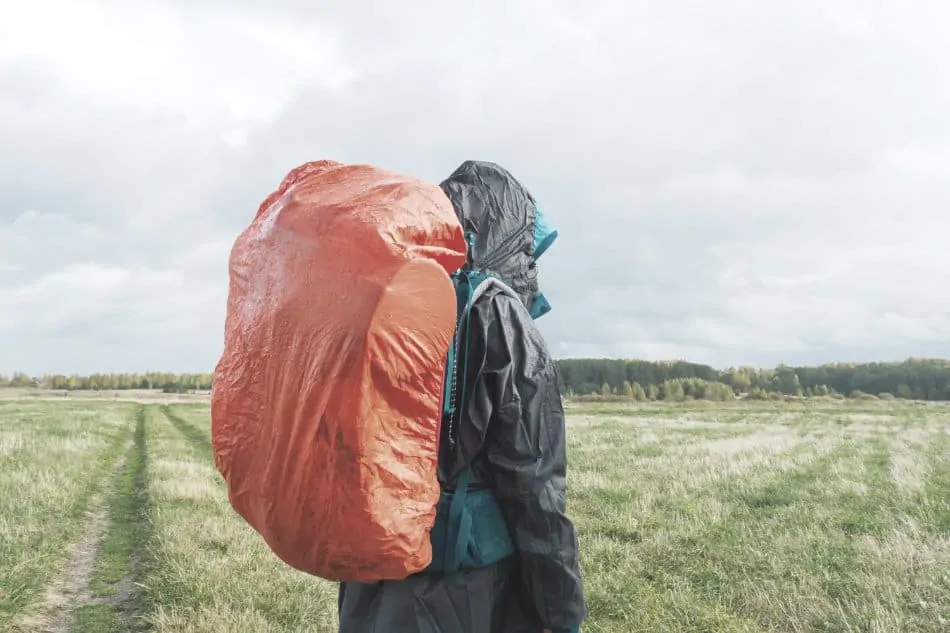
Ascertain which are your heaviest items and place them as low in your bag and as close to your back as possible. This will stabilize the weight of the whole bag and not throw off your center of gravity, keeping your bag rooted firmly even when you’re hiking over uneven ground.
If your bag integrates a water storage system, this will be located between your shoulder blades, as it should be. Line this area with other heavy items like cookware or food, then keep these items in place with lighter bulky items such as clothing.
It will require forethought to place the items in your bag in order of necessity, but you’ll be glad you took the extra time to do this. No one wants to unpack half their bag just to get a flashlight. You’ll need to maintain a balance between your comfort and convenience when deciding what items to place in a prominent position.
If your waist belt has any pockets in it, use these for small items you’ll want to get quickly without having to take your pack off, like a knife, phone, lip balm or a flashlight. Top-loading backpacks may have a side zipper that allows you to reach bottom items without sifting through everything in your bag. Use any outside loops to store trekking poles or a small hatchet.
If you have groups of small items, as you will in a classic bug out bag, try collecting them into their own smaller bag with a unique color. That way, if you’re looking for medical items, you simply need to grab one bag to have bandages, tape, disinfectant and tweezers.
These bags can also serve the dual purpose of compressing bulky items like clothing into a smaller package for ease of storage and of keeping these items dry if your bag is exposed to rain or submerged when crossing water.
In addition to compression bags, clear plastic zip-top bags are a good choice as they will allow you to see the items inside while keeping them organized and dry.
Some smaller bags come with MOLLE strap systems that allow you to organize both inside and out, attaching them to your larger pack. You can turn these smaller bags into an everyday carry that you can attach to a larger bag when you need more capacity. Use carabiners and clips to attach things to the outside of your bag that you need access quickly.
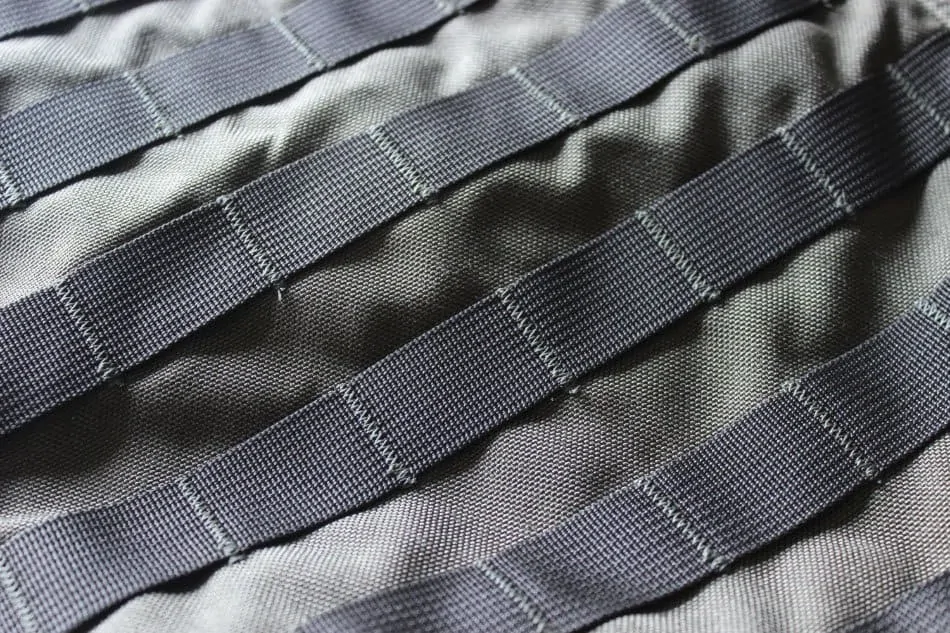
Avoid over-packing your bag. Lay out everything you’re planning to put in your pack, separating absolute essentials from luxury items. While your essential items are non-negotiable, be choosy with your luxury items and only bring a few of them. It’s better to have an under-packed bag than an overstuffed one.
Go through your bag from time to time if you don’t use it often to remind yourself of its layout. Rotate out any perishable items, like protein bars or dehydrated food when necessary. Not only will it keep your memory clear on what items go where, you’ll also keep your food items fresh.
Additional Accessories to Look out For
Chest Strap
A chest strap will help to distribute the weight of your pack through the sturdiest part of your body, your chest.
Placed across your sternum, the chest strap can help to ease the strain on your shoulders by taking some of the weight, and they are usually constructed with a sturdy buckle that snaps firmly into place, which has the added benefit of keeping your shoulder straps from slipping.
Waist Strap
The waist strap will place the bulk of the weight across your hips, ergonomically transferring the weight you would be carrying on your shoulders and distributing it more gradually across your hips where at least 80% of the weight should sit.
This will help you to maintain your balance when walking or climbing over uneven surfaces. It will also help to reduce muscle fatigue across your back and shoulders when walking long distances.
Hydration Bladder
Many packs will integrate a flexible, lightweight pouch meant to hold water into their design, either coming with a bladder and accompanying straw-like flexible hose or designing a spot for one that the buyer can add according to preference.
Its integration into a pack helps to distribute the weight of the water more efficiently and its mouthpiece is easy to keep close at hand, making it more convenient than a typical bottle of water for long treks.
Paired with a water purification device or tablets, a hydration bladder makes an excellent long-term system for storing water and keeping it quickly available for use.
MOLLE Attachments
An acronym standing for Modular Lightweight Load-carrying Equipment, MOLLE is a web-like system initially designed for military use that is meant for attaching gear to a pack or used as a system of support for large packs. Bags that use this system can be modified with extra additions that will say they are “MOLLE-compatible,” meaning they will mate with the system without needing further adjustment.
MOLLE is especially useful when added to the design of smaller bags, such as a medical kit or toiletry bag.
The MOLLE webbing on the exterior of the kit can hold implements or other items firmly in place but allow for quick access when needed.
Conclusion
The best packs will make a science out of load bearing. Ultimately what you want from your pack is a lightweight, durable container that will hold what you need and not cause undue discomfort when using it over long distances. There is a correlation between quality and price, but you won’t need the most expensive pack to get an excellent quality and efficient use from your tactical backpack.
Decide your price range and make a list of the factors you consider most important. Many of these will likely reflect your climate and the scenarios you envision when using your pack.
If your climate is a desert, you’ll value ventilation design over waterproofing. If you plan to use your pack as a 72-hour bag that you may need to live out of for days at a time, you’ll want ultra-light materials and plenty of compartments.
There’s never been more selection or better quality on the market than right now, thanks to the popularity of trekking and the advances in military design spilling over into the civilian market, so you’re likely to find an excellent pack within your price range.
Once you’ve weighed the range of factors and made your decision on size, color scheme, material and quality, take your new pack on a short practice run in order to get used to carrying the weight and adjusting the straps to fit your particular shape snugly.
Your new tactical backpack will then be ready for whatever adventures you have in mind.
I’m Nebojša, a seasoned digital marketing professional with over 15 years of experience. My writing covers a diverse range of topics, from technology and gaming to app development and automobiles, all while delving into the intricacies of SEO optimization. Beyond the digital realm, I find solace in nature, inherited from my father’s love for the outdoors. His passion for hunting has influenced me, adding another layer to my appreciation for the natural world.